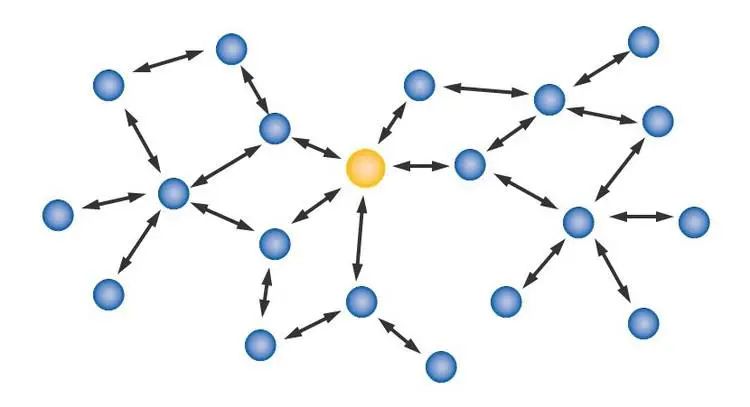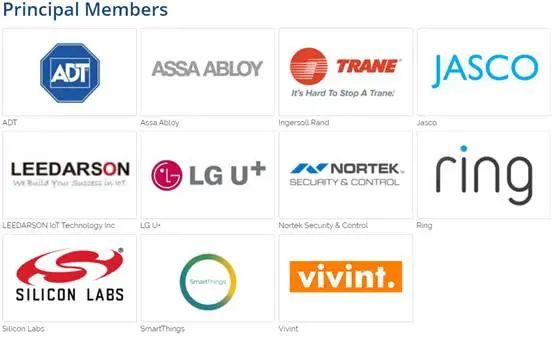The development and application of smart home standards have always been hot topics of interest in the industry. Recently, Qianjia.com has discussed many issues regarding smart home standards, including Zigbee, Z-Wave, Thread, and Dotdot, among others. However, for the two most commonly used standards in smart homes, Zigbee and Z-Wave, many newcomers are still somewhat confused about the differences between them and which one is more suitable for smart homes.

For smart home applications, we typically need to understand four main wireless technology standards. Among these, two are well-known: Wi-Fi and Bluetooth. The latter two, Zigbee and Z-Wave, are relatively unfamiliar to many first-time smart home users.
These wireless technologies can connect smart home devices together, but Zigbee and Z-Wave operate differently from Wi-Fi and Bluetooth. Unlike Wi-Fi, which requires a router to bridge devices, Zigbee and Z-Wave use mesh networks to connect directly with devices. Data is sent from the control center to one device and then relayed to the next device. This allows data to be transmitted to devices outside the control center’s signal coverage area because each device in the network can act as a signal relay, continuously extending the signal. In contrast, Wi-Fi cannot transmit control beyond the router’s signal range, and more importantly, Wi-Fi consumes a lot of power, making it unsuitable for battery-powered sensor devices.
In smart home systems, the data that needs to be transmitted is usually just a command or a small piece of information. For example, it could be a command to turn on a light bulb or to check the readings from a humidity sensor or thermostat.
Both Zigbee and Z-Wave devices consume very little power, and in some cases, can last for years or even a decade before needing battery replacement. Currently, there are many devices on the market that integrate Zigbee and Z-Wave technologies, including smart thermostats, smart locks, smart switches, smart bulbs, and smart plugs. They can all be controlled through a control center that supports Zigbee or Z-Wave, such as the Amazon Echo Plus.
Zigbee is an open standard controlled by the Zigbee Alliance, established in 2002, initially created for commercial purposes and later transitioned to smart home applications. Z-Wave is a wireless networking protocol developed by the Danish company Zensys in 2001, primarily designed for home automation. In 2009, Z-Wave was acquired by Sigma Designs, and then in early 2018, it was sold to Silicon Labs for $240 million.
For more information on Zigbee and Z-Wave, refer to the following two articles:
In-depth discussion on the application of Zigbee technology in smart homes
Discussion on smart home standards: Z-Wave
What is a Mesh Network?

A mesh network can provide more comprehensive coverage than a Wi-Fi network, such as extending network coverage to more rooms or even outdoor gardens. This is because a Wi-Fi network only sends data back and forth between a single device and the router; therefore, devices that are farther away receive weaker signals, which may lead to unstable connections. Additionally, when multiple rooms in a home need to be connected, some devices may require the Wi-Fi signal to pass through multiple thick walls to reach them, significantly reducing the Wi-Fi signal strength.
In contrast, a mesh network overcomes this issue by relaying signals through nearby devices. For example, a signal to turn on a light bulb might come from another device in the same room that is closer to the control center (such as a smart plug). The control center first transmits the control command to the smart plug, which then sends it to the smart bulb. Similarly, a command to turn on a light at the farthest end of the house can still be easily transmitted because one or more Zigbee or Z-Wave devices along the way continue to act as signal relay transmitters.
This means that smart home devices can communicate seamlessly throughout the house, and the more devices installed, the greater the network coverage.
The main difference between the mesh networks of Zigbee and Z-Wave is that Z-Wave only allows signals or data to be relayed four times throughout the network, while Zigbee has no such limit. The latest Z-Wave 700 series (launched in early 2018) has a transmission range of up to 300 feet (approximately 90 meters) in open environments. Therefore, the four relay range exceeds 300 meters, which is sufficient for ordinary large villas. Although the transmission range of Zigbee is slightly less than that of Z-Wave, the lack of relay limitations means that there are not many transmission distance issues in smart home application scenarios.
However, the actual transmission distance depends on the device’s location, just like Wi-Fi and Bluetooth, where walls can also weaken signals. Nonetheless, in a smart home mesh network, the distance between devices is generally not too far apart, so other devices can replicate and relay signals before exceeding the coverage range.
Technical Differences Between Zigbee and Z-Wave
Although Zigbee and Z-Wave work similarly by sending information to smart home devices via mesh networks, there are some functional differences between them.
For example, Zigbee uses 915 MHz and 2.4GHz radio frequencies, which many people may be familiar with. Indeed, this frequency band is also used by Wi-Fi. Therefore, theoretically, having a large number of Zigbee and Wi-Fi devices in a home may cause interference issues.
While it seems that most homes are filled with various Wi-Fi devices operating in the 2.4GHz frequency band, adding a large number of Zigbee devices may raise some user concerns. However, from the perspective of smart home device operational frequency and data transmission volume, this does not seem to be a significant issue.
In contrast, Z-Wave operates in the 800-900MHz lower frequency range (which is less crowded), thus not affected by Wi-Fi interference.
Additionally, there are differences between the two in terms of the amount of data transmitted at one time and the number of devices supported on a single network. In this aspect, Zigbee has a slight advantage; compared to Z-Wave‘s 10-100KB per second data transmission speed, Zigbee can transmit data at 40 to 250 KB per second. At the same time, a Z-Wave network can connect up to 232 devices (or nodes), while Zigbee can connect up to 65,000 devices. Regarding device capacity, for general household applications, 200+ devices are sufficient, but for extremely large villas or commercial environments, it may not be enough.
Although this rate may seem meager compared to Wi-Fi and cellular connections, it does not hinder the development and application of Zigbee and Z-Wave, as they are only used to transmit very small amounts of data, such as commands for device operations or data read from sensors, rather than needing to transmit large files like high-definition videos frequently as in Wi-Fi and cellular networks.
Finally, both technologies use the same AES-128 encryption to protect smart home security, which is particularly important for devices like smart locks and security cameras.
Industry Ecosystem
More and more well-known brands have joined the Zigbee Alliance, such as Legrand, Philips, Samsung, LG, GE, Belkin, ADT Security Center, Shanfly, Honeywell, Yale, and others. Even giants like Apple, Google, and Amazon have joined the Zigbee Alliance to jointly establish a unified connection standard. In China, companies like Yunding, Orvibo, Haimen, and Shunzhou Smart are also members of Zigbee.

Members of the Zigbee Alliance (partial)
For more on the Zigbee Alliance, visit:
https://zigbeealliance.org/members/
Similarly, the Z-Wave Alliance has attracted a large number of well-known companies, and most well-known companies have joined both alliances. It is reported that the Z-Wave Alliance has more than 700 members and over 2600 certified products, a number that has grown from 1700 in 2017 and 6 in 2005. There are currently over 100 million Z-Wave devices in operation, and the Z-Wave Alliance claims that 90% of leading security companies use Z-Wave in their products. Domestic companies like Hedong Electronics and Hikvision are also members.

Major members of the Z-Wave Alliance (partial)
For more on Z-Wave Alliance members, visit:
https://z-wavealliance.org/z-wave_alliance_member_companies/
In comparison, the Z-Wave Alliance has more members, but the Zigbee Alliance includes giants like Apple, Google, and Amazon. Given these giants’ user base and influence, from the perspective of the smart home industry ecosystem, the Zigbee Alliance is more promising.
How to Choose Between Zigbee and Z-Wave Devices?
Although Zigbee and Z-Wave are not compatible, we have seen that some smart home manufacturers have joined both alliances and launched products that support both protocols. So, how should consumers choose?
Of course, the safest approach is to choose products that support both protocols. Next, more considerations should be given to factors such as price, compatibility with existing devices, and future expandability. Both protocols have their advantages, and choosing the one that suits you best is the correct approach.
However, as more smart home products are used in combination with smart speakers, ordinary users will have more flexibility than ever when building their smart home systems. (Written by / Meng Guangwei)
 Recommended Reading:
Recommended Reading:
-
25 Trillion “New Infrastructure”: Where Are the Opportunities in the Smart Industry? -
5G Empowerment: Analyzing Five Development Trends in Smart Transportation -
The Role of IoT in HVAC